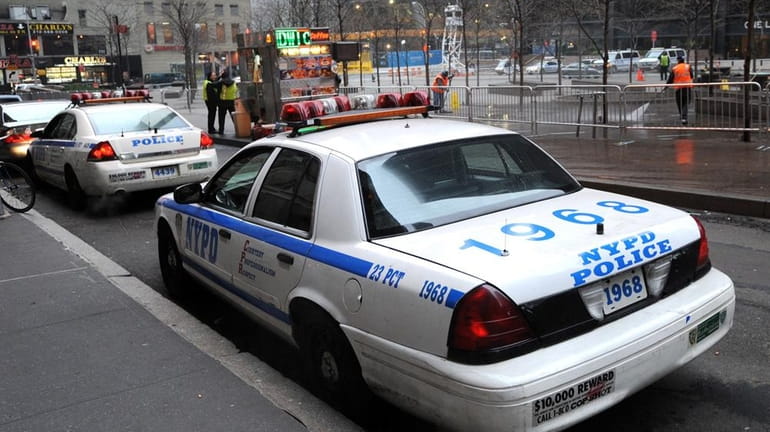Fewer homicides in New York City but most of the dead are black or Hispanic, crime stats show

New York City is on track this year for the fewest homicides since 1956 but the overwhelming number of the dead are black and Hispanic, mostly killed by those of their own race and ethnicity, according to the latest NYPD crime statistics. Credit: Getty Images
New York City is on track this year for the fewest homicides since 1956 but the overwhelming number of the dead are black and Hispanic, mostly killed by those of their own race and ethnicity, according to the latest NYPD crime statistics.
The crime trend mirrors higher victimization rates among blacks and Hispanics that have persisted for years, even though the total number of homicides has plummeted since hitting a high of 2,245 in 1990, said law enforcement officials and community leaders. Through Nov. 30, the city recorded 290 homicides, down 7 percent from the same period last year.
According to the latest full police analysis that used data through Nov. 23, the number of black and Hispanic victims killed were 88 percent of all homicides, while the percentage of known black or Hispanic homicide suspects hit 89 percent.
With overall serious crimes down 4 percent this year and homicides expected to come in at the lowest point in the modern era of police record-keeping, City Hall is expected to make a public assessment of the crime situation this week, perhaps as early as Tuesday.
But while homicides and other crimes are down, some community activists like the Rev. Herbert Daughtry of the Brooklyn-based House of the Lord Pentecostal Church, said the lower numbers aren't low enough.
"It is way down but it is still too high," said Daughtry, with particular reference to the homicides in black and Hispanic communities.
In a forum last week, NYPD Commissioner William Bratton said that while the city has been going through a relatively peaceful time, there is still a cloud hanging above 15 precincts of the 77 in New York bearing the brunt of violence and shootings.
"Almost all of them minority or people of color, almost all of them below the poverty level in terms of income levels in the city," said Bratton about the impact precincts, mostly in Brooklyn and the Bronx.
The heavy impact of homicide on black and Hispanic neighborhoods is something mirrored in other U.S. cities, said retired NYPD supervisor Joseph Giacalone, who lectures on crime.
But for Daughtry, talking about "black folks killing black folks" as has sometimes occurred in the violent aftermath of the Ferguson, Missouri, grand jury decision, misses the larger underlying point.
"The issue is how do we stop that from happening," said Daughtry. One way would be to create jobs to give hope to poorer communities, he believed.
After touring refugee camps in Africa, Daughtry discovered that the resident population, living in cramped squalor, was resorting to violence, with high numbers of young single women becoming pregnant.
Professor Eugene O'Donnell of the John Jay College of Criminal Justice hoped that the heated rhetoric after Ferguson doesn't interfere with the job cops have to do to solve murders and other violent crimes.
"Along with being black, the victims are often at the margins of our society and the whole legal system should be geared to vindicating their lives," said O'Donnell. "Go get the bad guys, whether somebody is killed on Sutton Place [Manhattan] or Lincoln Place [Brooklyn]."

